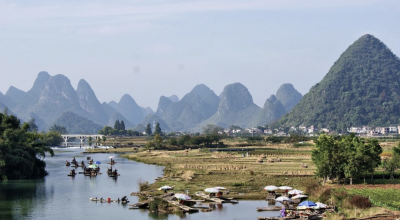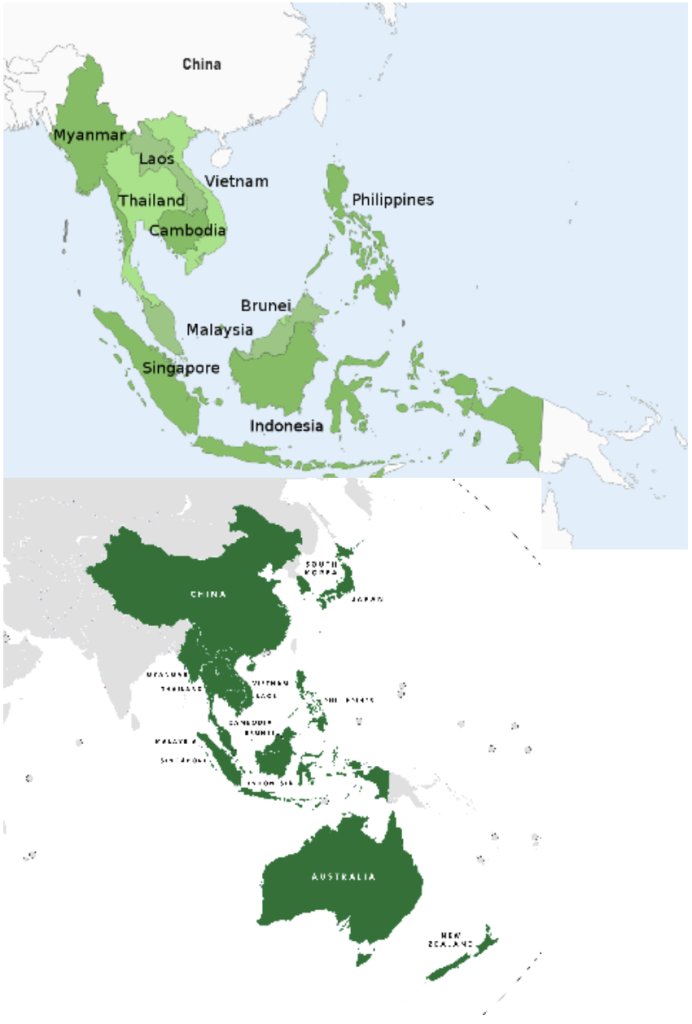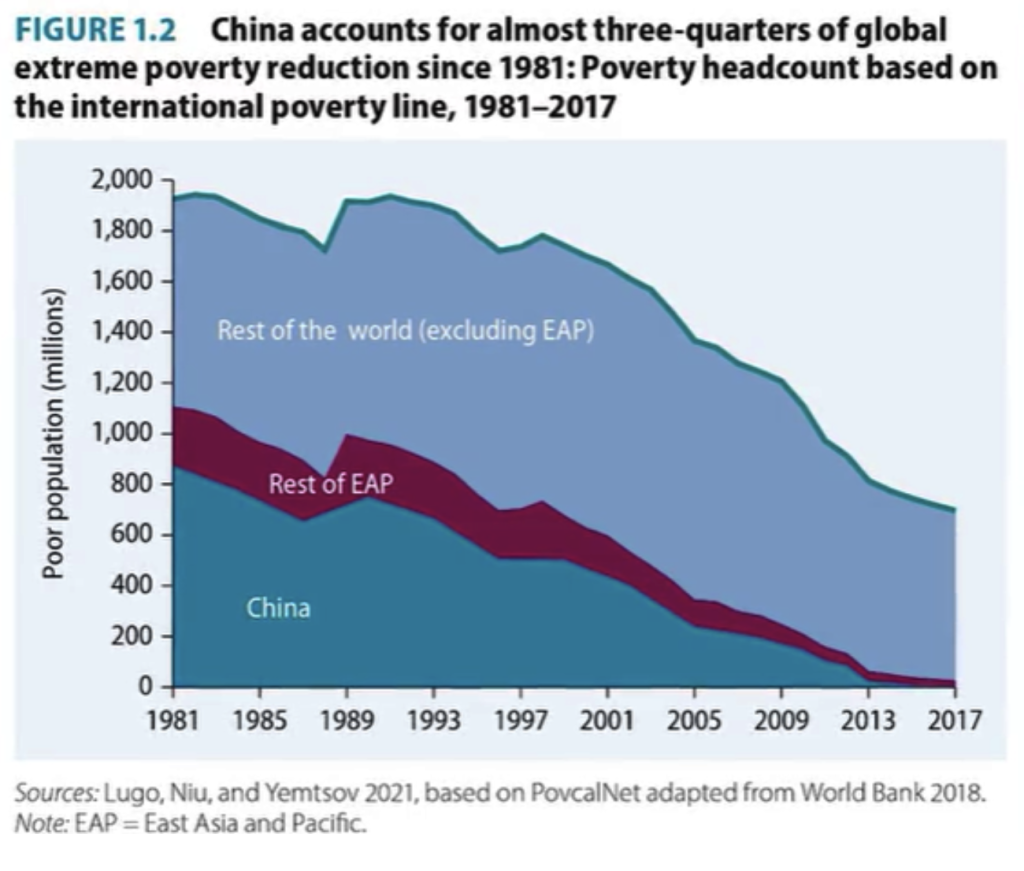Guangxi: An Unknown but Spectacular Development Model

All Global Research articles can be read in 51 languages by activating the Translate Website button below the author’s name (only available in desktop version).
To receive Global Research’s Daily Newsletter (selected articles), click here.
Click the share button above to email/forward this article to your friends and colleagues. Follow us on Instagram and Twitter and subscribe to our Telegram Channel. Feel free to repost and share widely Global Research articles.
Big Tech’s Effort to Silence Truth-tellers: Global Research Online Referral Campaign
***
The Guangxi region in southern China is poverty-stricken, but its level of development shoots up like an arrow to the sky. What is the secret of this spectacular development model? Jan Jonckheere, a Belgian China expert made a study tour of the region and looked for answers.
Two-track Policy
Guangxi is an autonomous region in southern China. It is home to nearly 50 million people from various ethnic groups. The region is hilly and characterised by so-called karst landscapes, of which Guilin is the best known.
It is a poverty-stricken region. Its GDP per inhabitant is 64 times lower than that of United Kingdom. In 2015, in Guangxi 6.3 million people lived in extreme poverty, 13 per cent of the population. The Chinese government decided to tackle this situation of poverty and underdevelopment. A twin-track policy emerged.
On the one hand, a large-scale poverty reduction project was coupled with robust economic and technological investment in the region. On the other hand, trade and economic cooperation was strongly promoted, mainly with Southeast Asian countries.
Poverty Reduction, Plus Economic and Technological Investment
With the help of international organisations such as the World Bank, the government designed a large-scale plan to fight poverty. It sent an army of researchers to 5,000 villages to determine the condition of each family. It put the data obtained into a database for processing.
Over the past five years, Guangxi has also relocated 710,000 people from inhospitable areas to other places. Almost all the relocated villagers have been able to find jobs near their new homes as a result.
One of the most striking aspects of the poverty reduction programme was cooperation with the more prosperous and neighbouring Guangdong province.
Source: Wikimedia Commons
From 2016, this richer province invested a lot of money in poverty alleviation projects, covering infrastructure, employment, education and health. These joint projects and investments brought about infrastructure improvements, such as the construction of roads to connect isolated villages and improve access to markets.
This made it easier to trade local products and boosted economic activity, which helped improve the livelihoods of local people.
Guangdong also sent tens to hundreds of teachers, doctors and nurses to Guangxi. Two Communist Party cadres were also sent per district to oversee and coordinate the whole project.
A good example of cooperation between the two regions is the twinning for poverty alleviation of Shenzhen, a multi-million-dollar city from Guangdong, with Hechi, Guangxi’s city with the highest poverty rate. Companies from Shenzhen were urged to invest in Hechi. Dozens of schools in Shenzhen were linked to schools in Hechi and the same happened with hospitals.
The amounts of money released for this large-scale development project are nothing short of impressive. In 2018, enterprises from Guangxi and Guangdong signed hundreds of cooperation projects with a total investment of 394 billion yuan ($55 billion). By comparison, the total official development aid from all rich countries combined amounted to $211 billion last year.
The investments did not only happen in the industrial sector. Livestock cooperatives were set up for farmers who had barely been making ends meet growing maize. Young people got the opportunity to receive vocational training.
Guangdong and Guangxi also set up a joint programme to reduce poverty through tourism development in the region with its karst landscapes.
These programmes not only helped generate income for people previously living in poverty, but also contributed to developing skills and strengthening the local economy.
In technological development, Guangxi has focused on innovation and cooperation with leading technology centres, such as the Zhongguancun Technology Park in Beijing. The establishment of an innovation zone in Nanning, the capital of Guangxi, has led to the establishment of high-tech enterprises and the promotion of research and development.
That technological innovation makes full use of artificial intelligence and big data. Based on it, tickets for the metro, for example, are being replaced by photos. Drones are introduced into agriculture, and thanks to AI, smart irrigation, cameras, sensors and temperature systems controlled via smartphone and cloud computing, people are growing fruit and vegetables with remote control.
After all, China expects fewer and fewer farmers to be available so the evolution towards high-tech agriculture seems inevitable.
The public sector is not lagging behind technological development either. 7,000 buses run on electricity today, but Nanning plans to replace this fleet with hydrogen-powered buses.
Gateway to Southeast Asia
This innovation strategy is also designed in the context of the New Silk Roads, especially with a view to the Southeast Asian countries, also known as the ASEAN countries. In other words, besides poverty reduction and its own economic development, Guangxi also focused on promoting trade and economic cooperation with countries in the region.
ASEAN countries: Map: Wikimedia Commons
This approach has been successful. In recent years, trade between Guangxi and ASEAN has grown significantly. This was partly due to initiatives such as the Regional Comprehensive Economic Partnership (RCEP), the largest trading bloc in the global economy. Currently, trade with other RCEP countries accounts for 56 per cent of Gaungxi’s foreign trade.
The 15 member states of the RCEP represent about 30% of the world’s population and 30% of global GDP. Map: Wikipedia
A major share of that trade is agricultural products, and there we see a shift from traditional trade in fresh fruit to processed food products. Exports of electric passenger cars, lithium-ion batteries and solar cells also saw a surge.
Guangxi has positioned itself as a major player in regional cooperation and trade in Southeast Asia in just a few years, which in turn contributes to the region’s economic development.
Powerful Development Model
Through a combination of public investment, cooperation with a prosperous neighbouring province and innovative developments, Guangxi has undergone an impressive transformation.
The results have been spectacular. In less than a decade, extreme poverty was not only eliminated, but the region also leapt forward in terms of economic development and technological innovation. From a backward agricultural region, it has now become a major trading partner in Southeast Asia.
Guangxi is internally poised to shift from poverty reduction to reviving its rural areas. It will not hesitate to deploy smart solutions for doing so. Now this is only done internally, but later the region will also offer those solutions to ASEAN countries and states along the New Silk Roads.
The Western development model for countries of the Global South is largely based on the funding of foreign NGOs focused on mainly local projects. Exceptions aside, this does not yield much more than some fiddling at the margins.
China is responsible for three quarters of the eradication of extreme poverty worldwide. Graph: World Bank
Despite all good intentions-let us assume they inspired Western initiatives- and billions of development aid, countries in the global South remain locked into their role as exporters of cheap raw materials and importers of expensive finished and technological products, and thus remain poor.
Here we see a much more powerful development model at work. Since the 1980s, China has contributed for three quarters to the eradication of extreme poverty worldwide and has managed to escape economic and technological underdevelopment
It gives food for thought.
Various sources, own visit.
*
Note to readers: Please click the share button above. Follow us on Instagram and Twitter and subscribe to our Telegram Channel. Feel free to repost and share widely Global Research articles.
Jan Jonckheere is the editor of the Belgian website chinasquare.be.
Featured image: Guangxi is known for its karst towers in the landscape. Foto: Wikimedia Commons




